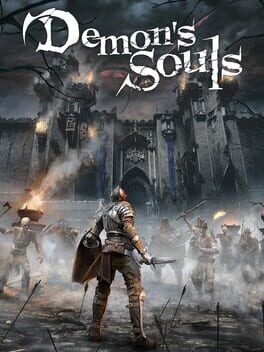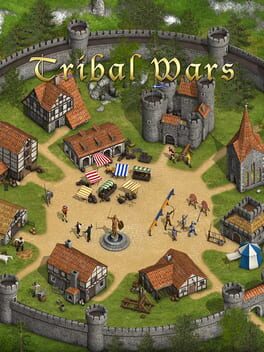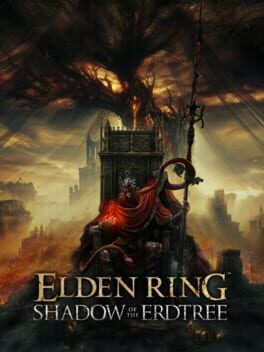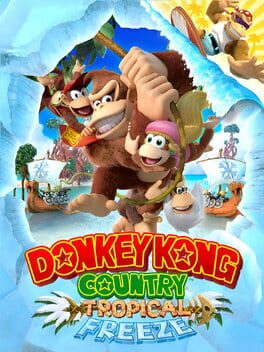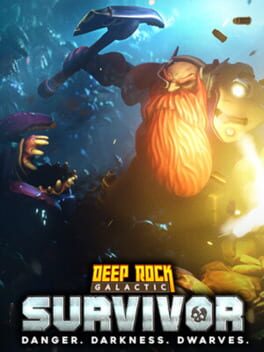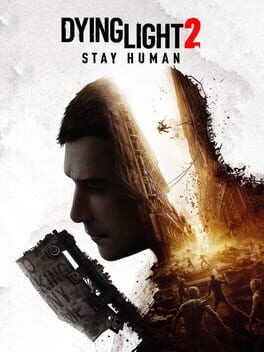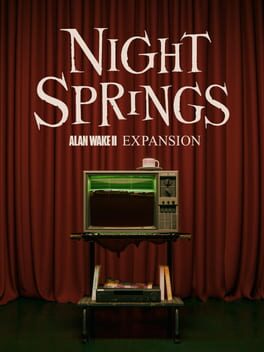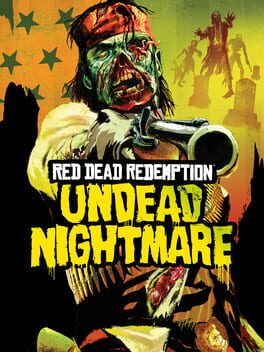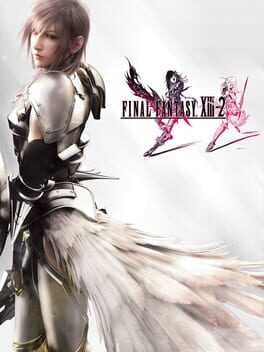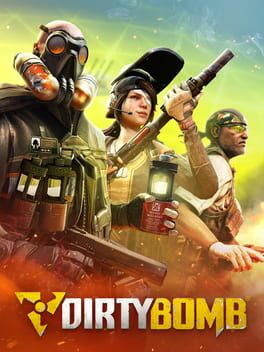Detectivefail
21589 Reviews liked by Detectivefail
Demon's Souls
2020
I have 1 true thing to say and 1 real thing to say: First, Demons Souls Remake is a pretty alright way to play Demons Souls in the modern era. Its certainly not not worth playing. HOWEVER.... It is also my go to example of what not to do when developing a remake. By necessity remakes aim to make some changes - so an essential question to ask or keep in mind is: does this align with the original artistic intention? If a remake has to make changes, you hope these changes enhance or highlight the attitude of the original work.
To me, Demons Souls Remake was made by people (whether it was Bluepoint or Sony) who wanted to make Demons Souls slightly more appealing to a different audience. While they never change anything crucial to the experience of Demons Souls, the changes they make feel cloying and wormy. Oh, Valley Of Defilement looks too defiled and oppressive? Gotta turn on the high contrast filter to increase the magpie-shiny sex appeal? Why did they change the starting Knight set and hide the Fluted Set like it was a secret to hide in a drawer somewhere? Not every change was bad (there was no reason for Penetrators magic to be blood-red but it does make him more badass) but so many of the changes seem to dislike that Demons Souls was weird and it just rubs me the wrong way. It feels disrespectful to the original vibe, like they were ashamed or embarrassed or just not very confident in Demons Souls’ personality. The changes feel revisionary and I cant help but resent that.
To me, Demons Souls Remake was made by people (whether it was Bluepoint or Sony) who wanted to make Demons Souls slightly more appealing to a different audience. While they never change anything crucial to the experience of Demons Souls, the changes they make feel cloying and wormy. Oh, Valley Of Defilement looks too defiled and oppressive? Gotta turn on the high contrast filter to increase the magpie-shiny sex appeal? Why did they change the starting Knight set and hide the Fluted Set like it was a secret to hide in a drawer somewhere? Not every change was bad (there was no reason for Penetrators magic to be blood-red but it does make him more badass) but so many of the changes seem to dislike that Demons Souls was weird and it just rubs me the wrong way. It feels disrespectful to the original vibe, like they were ashamed or embarrassed or just not very confident in Demons Souls’ personality. The changes feel revisionary and I cant help but resent that.
Tribal Wars
2003
Having a group of friends play this over several weeks was good fun, although the more strategically-inclined, warmongering members always ended up dominating the rest of us who were just trying to get a grip on things. The real-time progress of the tasks in this game made it great for stealthily popping in during class and set a new batch of resources for processing. Or to see your freshly trained troops be absolutely demolished by the smirking classmate opposite you. Ah. If only we could live in peace.
I'm giving this an actual serious review because I have a LOT to say about this DLC.
First off, Elden Ring's base game is one of my favorite games of all time. I've beaten it three times now, each with different builds, and each run hitting at least every remembrance boss (I think one of the saves I skipped Malenia because I didn't feel like it but she's a good boss)
As for the dlc: I think the level design, art direction, writing (maybe? I'm not a lore guy I'm here for the game part), voice acting, and the ost were superb and as good if not better in some spots than the base game.
However, the complaints (which there's been a lot of online obv) I have is mainly with, you guessed it, the combat.
Scadutree Fragments are a very cool concept, it enables a game that was already (probably) a nightmare to balance to be able to be a progressive experience for everyone.
The problem lies in its execution. The scaling doesn't make much sense, the areas you get most of these are hidden, which wouldn't be a problem, but if you aren't high enough level than bosses and normal enemies one-two shot you with menial hits, and take 8 years to kill. Now, that wouldn't be a problem, if, say, you got this material from fighting enemies, like you do runes, but you dont. They're entirely miss-able and don't scale very noticeably until you're level 12 or higher.
Then there's the bosses. I think some of the bosses in the dlc are phenomenal. Dancing Lion and Rellana are some of the coolest bosses in the ENTIRE game, and yet, a common theme with this DLC that is much much MUCH more of a frequent issue, is...
The camera.
Now I know a lot of people are like "that's what makes it hard, it's like that on purpose", but I dont buy it. Whenever you die to a camera issue, you don't get to learn dodge timings, you don't get to learn tells, all because you CANNOT see the enemy on screen.
Bayle and the rest of the dragon battles are the easiest to point to, as they were already an issue in the base game (although I think Bayle is ironically the least annoying).
Other bosses, like Messmer and the final boss's phase 2, have the problem of that their attacks have so many goddamn particle and special effects that completely block the attacks to the point where you can't really see where you're going.
I genuinely think it's possible for these games to be hard without the clunky camera. Lies of P, for example, has a significantly less janky camera, and still has some insanely hard bosses on par with Malenia (the final boss of Lies of P is just as hard as her in my personal opinion).
I think we've reached a point where the camera is a genuinely inexcusable problem. They have not improved their camera in any meaningful (and often noticeable) way since the jump from Demon Souls to Dark Souls 1. I can't say I'd know how to FIX the issue, per se. Maybe have a different camera angle for specific bigger enemies, maybe have boxed-in arenas have two walls, one the character and boss can't go through, and one further back that allows the camera to zoom out through the wall but still see the action. Other games, like the recent SMTV overworld or, again, Lies of P, have camera systems designed like this.
I still think Elden Ring is in my top 10 games of all time, but I can say with certainty that I will not be playing Shadow of the Erdtree ever again.
First off, Elden Ring's base game is one of my favorite games of all time. I've beaten it three times now, each with different builds, and each run hitting at least every remembrance boss (I think one of the saves I skipped Malenia because I didn't feel like it but she's a good boss)
As for the dlc: I think the level design, art direction, writing (maybe? I'm not a lore guy I'm here for the game part), voice acting, and the ost were superb and as good if not better in some spots than the base game.
However, the complaints (which there's been a lot of online obv) I have is mainly with, you guessed it, the combat.
Scadutree Fragments are a very cool concept, it enables a game that was already (probably) a nightmare to balance to be able to be a progressive experience for everyone.
The problem lies in its execution. The scaling doesn't make much sense, the areas you get most of these are hidden, which wouldn't be a problem, but if you aren't high enough level than bosses and normal enemies one-two shot you with menial hits, and take 8 years to kill. Now, that wouldn't be a problem, if, say, you got this material from fighting enemies, like you do runes, but you dont. They're entirely miss-able and don't scale very noticeably until you're level 12 or higher.
Then there's the bosses. I think some of the bosses in the dlc are phenomenal. Dancing Lion and Rellana are some of the coolest bosses in the ENTIRE game, and yet, a common theme with this DLC that is much much MUCH more of a frequent issue, is...
The camera.
Now I know a lot of people are like "that's what makes it hard, it's like that on purpose", but I dont buy it. Whenever you die to a camera issue, you don't get to learn dodge timings, you don't get to learn tells, all because you CANNOT see the enemy on screen.
Bayle and the rest of the dragon battles are the easiest to point to, as they were already an issue in the base game (although I think Bayle is ironically the least annoying).
Other bosses, like Messmer and the final boss's phase 2, have the problem of that their attacks have so many goddamn particle and special effects that completely block the attacks to the point where you can't really see where you're going.
I genuinely think it's possible for these games to be hard without the clunky camera. Lies of P, for example, has a significantly less janky camera, and still has some insanely hard bosses on par with Malenia (the final boss of Lies of P is just as hard as her in my personal opinion).
I think we've reached a point where the camera is a genuinely inexcusable problem. They have not improved their camera in any meaningful (and often noticeable) way since the jump from Demon Souls to Dark Souls 1. I can't say I'd know how to FIX the issue, per se. Maybe have a different camera angle for specific bigger enemies, maybe have boxed-in arenas have two walls, one the character and boss can't go through, and one further back that allows the camera to zoom out through the wall but still see the action. Other games, like the recent SMTV overworld or, again, Lies of P, have camera systems designed like this.
I still think Elden Ring is in my top 10 games of all time, but I can say with certainty that I will not be playing Shadow of the Erdtree ever again.
Essentially vampire survivors done better. I think this is kind of the peak of this genre just cause there's nothing that you can add to the depth here. It's fun to put on a podcast or a video or something in the background and play this but it's really nothing special, also the build potential here is really bad, there are objective good and bad characters and not much leeway in what you can do.
Dying Light 2: E a sua grandeza inconsequente.
É impossivel fazer uma análise de dying light 2 sem citar o primeiro jogo, em particular eu gosto muito do primeiro jogo em diversos aspectos, a sua história, sua gameplay, sua inovação pra época, praticamente tudo no primeiro jogo é simplesmente perfeito, porém é notável que no segundo jogo a techland resolveu mudar drasticamente algumas coisas dentro da franquia, dentre elas é a coisa que eu mais odeio nesse jogo, esse sistema rpg acompanhado dessa ubisoftização, parece verdadeiramente que estou jogando um jogo da ubisoft, que mundo aberto poluído, quanta coisa inutil, simplesmente pra inflar e criar conteúdo exagerado pra prender o jogador sem qualquer qualidade ou construção para tal.
Esse mesmo sistema de rpg, consegue simplesmente quebrar o jogo em tantos níveis, fazendo com que várias lutas contra chefes, se tornem risórios com tamanha facilidade.
Agora falando da história, ela é boa, existem vários personagens muito bons e que te deixam com vontade de saber mais da história, justamente pelo carisma deles e de alguns plot-twists que ocorrem mais pra frente no jogo, porém acredito que a história se estende mais do que deveria em alguns momentos, voltando novamente aquilo que eu disse que o jogo cria um excesso de conteúdo absurdo sem pensar na qualidade.
A ambientação é bem bonita e um dos pontos chaves desse jogo, o level design também é muito bom e se torna basicamente um playground de parkour com as opções que você tem, uma pena que algumas features como o gancho só são liberados mais pra reta final do jogo.
A respeito dos zumbis, não achei eles tão impactantes quanto no primeiro, principalmente os volátils que nesse jogo são meio tanto faz honestamente, e em questão dos zumbis normais, eles parecem muito mais um plano de fundo pro jogo, já que não apresentam nenhuma ameaça durante a gameplay.
Se você gosta do primeiro jogo assim como eu, é bem possível que você vá gostar muito desse jogo também (ou não), é uma experiência muito individual, somente jogando pra entender, eu recomendaria esperar ele entrar em uma promoção muito boa, já que aí sim vale a pena.
É impossivel fazer uma análise de dying light 2 sem citar o primeiro jogo, em particular eu gosto muito do primeiro jogo em diversos aspectos, a sua história, sua gameplay, sua inovação pra época, praticamente tudo no primeiro jogo é simplesmente perfeito, porém é notável que no segundo jogo a techland resolveu mudar drasticamente algumas coisas dentro da franquia, dentre elas é a coisa que eu mais odeio nesse jogo, esse sistema rpg acompanhado dessa ubisoftização, parece verdadeiramente que estou jogando um jogo da ubisoft, que mundo aberto poluído, quanta coisa inutil, simplesmente pra inflar e criar conteúdo exagerado pra prender o jogador sem qualquer qualidade ou construção para tal.
Esse mesmo sistema de rpg, consegue simplesmente quebrar o jogo em tantos níveis, fazendo com que várias lutas contra chefes, se tornem risórios com tamanha facilidade.
Agora falando da história, ela é boa, existem vários personagens muito bons e que te deixam com vontade de saber mais da história, justamente pelo carisma deles e de alguns plot-twists que ocorrem mais pra frente no jogo, porém acredito que a história se estende mais do que deveria em alguns momentos, voltando novamente aquilo que eu disse que o jogo cria um excesso de conteúdo absurdo sem pensar na qualidade.
A ambientação é bem bonita e um dos pontos chaves desse jogo, o level design também é muito bom e se torna basicamente um playground de parkour com as opções que você tem, uma pena que algumas features como o gancho só são liberados mais pra reta final do jogo.
A respeito dos zumbis, não achei eles tão impactantes quanto no primeiro, principalmente os volátils que nesse jogo são meio tanto faz honestamente, e em questão dos zumbis normais, eles parecem muito mais um plano de fundo pro jogo, já que não apresentam nenhuma ameaça durante a gameplay.
Se você gosta do primeiro jogo assim como eu, é bem possível que você vá gostar muito desse jogo também (ou não), é uma experiência muito individual, somente jogando pra entender, eu recomendaria esperar ele entrar em uma promoção muito boa, já que aí sim vale a pena.
Halo: Combat Evolved
2001
It's easy to call CE flawed after finishing my first playthrough here in 2024, but it's not lost on me how crazy it must've been to experience it on release.
Gameplay wise, it's top notch. Chiefs arsenal is slim compared to future titles but each weapon in CE is satisfying to use and fills its own niche. The story is great too with some memorable moments and charming humor sprinkled throughout. Stuff like Chief getting teleported upside down or crashing his banshee into the side of the Autumn on purpose really break up the tone and stick out in a positive way.
All that being said, it's not totally perfect. The level design really is as bad as people say. The first half has some really nice settings with some variety in objective, but the second gets repetitive in an almost ridiculous way. Copy and pasted hallways everywhere to the point where getting lost can easily happen if you get turned around.
Despite that, really good game that paved the way for some of the best the FPS genre has offered. Glad I finally got around to it!
Gameplay wise, it's top notch. Chiefs arsenal is slim compared to future titles but each weapon in CE is satisfying to use and fills its own niche. The story is great too with some memorable moments and charming humor sprinkled throughout. Stuff like Chief getting teleported upside down or crashing his banshee into the side of the Autumn on purpose really break up the tone and stick out in a positive way.
All that being said, it's not totally perfect. The level design really is as bad as people say. The first half has some really nice settings with some variety in objective, but the second gets repetitive in an almost ridiculous way. Copy and pasted hallways everywhere to the point where getting lost can easily happen if you get turned around.
Despite that, really good game that paved the way for some of the best the FPS genre has offered. Glad I finally got around to it!
Journey
2012
Journey can be said to exist almost without words. All story lines conveyed to the audiences appear in flash cut scenes that provide freedom of interpretation of what actually happened. Nevertheless, you can find a common thread, despite the various theories that may arise from it. You are seen playing the role of a red-robed explorer who seems to have one main goal which is to head to a mountain split by pillars of light in the distance. As if trying to find answers to what really happened to all the civilizations you pass through, mysteries emerge from every corner. The encounter of the character you use with a similar figure but in white clothes seems to imply the theme of enlightenment and self-discovery which seems to be the identity of Journey.
In terms of gameplay, Journey can be said to be very simple. I would categorize it as a platformer/adventure game, with the classic goal which is getting from point A to point B. Implementing a bit of an open world element in it, the world is offered in a fairly open format. Journey clearly makes exploration the foundation of its gameplay. It is more focused on finding a way to get to the next place, with challenges generally rooted in position, puzzle sequences, or the limitations of the main character you use yourself. At some points in the game you have to face aggressive enemies, but you are still in a "peaceful" position. Avoidance is the only way to continue living.
Your main character, also known as "The Traveler", comes with several standard main movements, of course apart from walking through various terrains. He can jump, and can also whistle weakly or strongly as a means of communication and a solution to existing puzzles. However, The Traveler himself is only able to execute one of these movements in a limited number of times. You can whistle as freely as you want, but your jumping ability will be very limited. The main indicator is a scarf that flutters every time you move. Each jump will consume some of the patterns on the eye-pleasing fabric, which, when used up, will eliminate your jumping ability which also means, loss of access to higher ground.
Journey also offers a fantastic world for the audiences to enjoy, not only from the visual side, but also audio. During the trip while you explore, you will also enjoy beautiful and stunning views. Whether you see the small sand tunnel that is created every time the Traveler slides over it, or when the cold snow starts to make your clothes turn white and look heavy, or simply because of the effect of light that appears from the sun at the end of the horizon that refuses to sink. Each of these moments felt extraordinary. It is also supported by soundtracks that is no less evocative. Your journey through so many exotic places with amazing designs seems to be enhanced by the music that accompanies your every small step.
The dreamy vibe and ‘show don’t tell’ approach are also present in the character animations, which I absolutely need to highlight. The living pieces of fabric all wave in the air representing a certain type of animal and the overall animations that come with crossing the extreme surroundings convey a certain weight to the player. Slowly pushing yourself through a snowstorm while your thumbstick says full force forward, or gently letting yourself turn from right to left when sliding down the loose sand of a dune, it all feels very convincing and natural.
At first glance, Journey might look like an experimental project that has the potential to be boring because of the lack of action. But once you start playing it, once you become a Traveler, as soon as your feet step on the first sand of your desert, you can feel the magical power that radiates from this game. It is a wonderful experience that feels as a breather between all the competitive, complex and story-driven games that require the fullest of your attention.
In terms of gameplay, Journey can be said to be very simple. I would categorize it as a platformer/adventure game, with the classic goal which is getting from point A to point B. Implementing a bit of an open world element in it, the world is offered in a fairly open format. Journey clearly makes exploration the foundation of its gameplay. It is more focused on finding a way to get to the next place, with challenges generally rooted in position, puzzle sequences, or the limitations of the main character you use yourself. At some points in the game you have to face aggressive enemies, but you are still in a "peaceful" position. Avoidance is the only way to continue living.
Your main character, also known as "The Traveler", comes with several standard main movements, of course apart from walking through various terrains. He can jump, and can also whistle weakly or strongly as a means of communication and a solution to existing puzzles. However, The Traveler himself is only able to execute one of these movements in a limited number of times. You can whistle as freely as you want, but your jumping ability will be very limited. The main indicator is a scarf that flutters every time you move. Each jump will consume some of the patterns on the eye-pleasing fabric, which, when used up, will eliminate your jumping ability which also means, loss of access to higher ground.
Journey also offers a fantastic world for the audiences to enjoy, not only from the visual side, but also audio. During the trip while you explore, you will also enjoy beautiful and stunning views. Whether you see the small sand tunnel that is created every time the Traveler slides over it, or when the cold snow starts to make your clothes turn white and look heavy, or simply because of the effect of light that appears from the sun at the end of the horizon that refuses to sink. Each of these moments felt extraordinary. It is also supported by soundtracks that is no less evocative. Your journey through so many exotic places with amazing designs seems to be enhanced by the music that accompanies your every small step.
The dreamy vibe and ‘show don’t tell’ approach are also present in the character animations, which I absolutely need to highlight. The living pieces of fabric all wave in the air representing a certain type of animal and the overall animations that come with crossing the extreme surroundings convey a certain weight to the player. Slowly pushing yourself through a snowstorm while your thumbstick says full force forward, or gently letting yourself turn from right to left when sliding down the loose sand of a dune, it all feels very convincing and natural.
At first glance, Journey might look like an experimental project that has the potential to be boring because of the lack of action. But once you start playing it, once you become a Traveler, as soon as your feet step on the first sand of your desert, you can feel the magical power that radiates from this game. It is a wonderful experience that feels as a breather between all the competitive, complex and story-driven games that require the fullest of your attention.
Black Mesa
2020
This review contains spoilers
‘Half-Life’ was a first-person shooter released in 1998. It was a massive success both critical and commercially, and to this day is a direct inspiration to probably some games. I was five years old when ‘Half-Life’ was released. My favorite game was ‘Dinosaur Adventure 3-D’ at this point in my life because I wasn't good enough at 'Dark Souls' and also 'Dark Souls' hadn't released yet. 1998 was a year filled with absolute bangers for North America, with a wealth of some of the most innovative and timeless gaming experiences, yet here I was playing ‘Dinosaur Adventure 3-D’ instead. I did not play ‘Half-Life’ until probably around 2010. I was a high schooler at this point, and I played video games on my PlayStation 2 and Nintendo GameCube. ‘Half-Life’ was ported to the PlayStation 2 in 2001, so I was playing a 9-year-old port of a 3-year-old video game which was designed to be played with a keyboard and mouse and not with a controller. Yet despite all of this, ‘Half-Life’ became one of my favorite gaming experiences. It’s gameplay loop, level design, and method of storytelling were all a brand new feeling for me. During this phase in my life, I enjoyed Japanese roleplaying games, so to see something which weaved the active gameplay into the full story was a relatively unique experience. In a way, ‘Half-Life’ made me the gamer I am today maybe.
Regardless of how much I adore ‘Half-Life’, it is impossible to ignore the many parts of the game which have not aged past the year 1998. Valve, the legendary development studio behind the ‘Half-Life’ franchise, has a tendency to become self-absorbed with their technological advancements to the detriment of the whole of the games they work on. There are many moments where the pace of the game is slowed down to a crawl so you can do something wholly unengaging, such as moving a box, which I've been told felt immaculate in 1998. This is not fun. Similarly, the final group of levels taking place on the alien home world of Xen are all bad. The drop in design ability from the chapter ‘Lambda Core’ to the chapter ‘Xen’ feels almost deliberately comical. It is through these obvious drawbacks which ‘Black Mesa’ chooses to adapt and thrive in it’s own way.
‘Black Mesa’ was not designed by Valve, instead coming from Crowbar Collective, a group of independent game designers who saw ‘Half-Life’ and thought, “This could be better, and we will be the ones to deliver the improvements upon the world.” They then used Valve’s very own storefront to sell this product. Valve had every right to be absolute chodes about the situation, but they did not. They actively allowed independent fans to sell a product based on their own intellectual property on their own first-party store. Imagine if Nintendo had done this with ‘AM2R’. I likely would not have had to play ‘Metroid: Samus Returns’. This is a shame. Like ‘AM2R’, ‘Black Mesa’ is one of the most powerful remakes to ever be released. It does everything in its power to lessen the negatives of the game it’s based on while simultaneously improving upon its other qualities.
‘Black Mesa’ makes many changes beyond the mere graphical upgrade to the game. Enemies are smarter and more likely to surround and overpower you. In the original ‘Half-Life’, the human enemies needed to halt movement in order to begin attacking, but they can move and shoot in ‘Black Mesa’ as if they were actually trained militia. Various portions of map are now more streamlined to avoid a disruption of flow to the game. The scientist and security AI have been buffed to be more agreeable to your needs and aren’t finnicky anymore. The voice acting has been redone to be less hammy, and new characters and scenes have been added to expand upon the story and to more appropriately link the events of the original ‘Half-Life’ to its sequels. It's a shame they still had to work with those Xen levels.....
Just kidding, they completely removed the final few chapters and replaced them with totally original levels to more effectively take on the smarter mechanics of this entry. The Xen levels now occupy a much longer portion of the overall runtime, and they might even be the best part of the game. It has become far more story-oriented, as well as making it more puzzle-focused while offering a wider variety of combat challenges. I also love the improvement to the Vortigaunt lore. In ‘Half-Life’, they are merely non-hostile towards you while you move through Xen, but ‘Black Mesa’ allows you to actively fight beside them against their oppressors. It may be worth experiencing Xen in the original ‘Half-Life’ simply from an historic standpoint, but it is wholly unnecessary beyond seeing just how much more care was put into ‘Black Mesa’. It takes one of the most innovative and brilliant shooters of all time and makes it better. It is still not as good as ‘Half-Life 2’, but it makes a comparison far more intriguing to discuss. My only issue with ‘Black Mesa’ is that I could not get my mouse wheel to scroll through weapons. This was annoying.
Regardless of how much I adore ‘Half-Life’, it is impossible to ignore the many parts of the game which have not aged past the year 1998. Valve, the legendary development studio behind the ‘Half-Life’ franchise, has a tendency to become self-absorbed with their technological advancements to the detriment of the whole of the games they work on. There are many moments where the pace of the game is slowed down to a crawl so you can do something wholly unengaging, such as moving a box, which I've been told felt immaculate in 1998. This is not fun. Similarly, the final group of levels taking place on the alien home world of Xen are all bad. The drop in design ability from the chapter ‘Lambda Core’ to the chapter ‘Xen’ feels almost deliberately comical. It is through these obvious drawbacks which ‘Black Mesa’ chooses to adapt and thrive in it’s own way.
‘Black Mesa’ was not designed by Valve, instead coming from Crowbar Collective, a group of independent game designers who saw ‘Half-Life’ and thought, “This could be better, and we will be the ones to deliver the improvements upon the world.” They then used Valve’s very own storefront to sell this product. Valve had every right to be absolute chodes about the situation, but they did not. They actively allowed independent fans to sell a product based on their own intellectual property on their own first-party store. Imagine if Nintendo had done this with ‘AM2R’. I likely would not have had to play ‘Metroid: Samus Returns’. This is a shame. Like ‘AM2R’, ‘Black Mesa’ is one of the most powerful remakes to ever be released. It does everything in its power to lessen the negatives of the game it’s based on while simultaneously improving upon its other qualities.
‘Black Mesa’ makes many changes beyond the mere graphical upgrade to the game. Enemies are smarter and more likely to surround and overpower you. In the original ‘Half-Life’, the human enemies needed to halt movement in order to begin attacking, but they can move and shoot in ‘Black Mesa’ as if they were actually trained militia. Various portions of map are now more streamlined to avoid a disruption of flow to the game. The scientist and security AI have been buffed to be more agreeable to your needs and aren’t finnicky anymore. The voice acting has been redone to be less hammy, and new characters and scenes have been added to expand upon the story and to more appropriately link the events of the original ‘Half-Life’ to its sequels. It's a shame they still had to work with those Xen levels.....
Just kidding, they completely removed the final few chapters and replaced them with totally original levels to more effectively take on the smarter mechanics of this entry. The Xen levels now occupy a much longer portion of the overall runtime, and they might even be the best part of the game. It has become far more story-oriented, as well as making it more puzzle-focused while offering a wider variety of combat challenges. I also love the improvement to the Vortigaunt lore. In ‘Half-Life’, they are merely non-hostile towards you while you move through Xen, but ‘Black Mesa’ allows you to actively fight beside them against their oppressors. It may be worth experiencing Xen in the original ‘Half-Life’ simply from an historic standpoint, but it is wholly unnecessary beyond seeing just how much more care was put into ‘Black Mesa’. It takes one of the most innovative and brilliant shooters of all time and makes it better. It is still not as good as ‘Half-Life 2’, but it makes a comparison far more intriguing to discuss. My only issue with ‘Black Mesa’ is that I could not get my mouse wheel to scroll through weapons. This was annoying.
Vampire Survivors
2022
Persona 3 Reload
2024
To moje pierwsze zetknięcie z kultową serią Persona i po niemal nieustannym "maniaczeniu" w Trójkę Reload przez ostatnie sześć dni, absolutnie rozumiem fenomen tej gry i jestem istotnie zachwycony, a może bardziej uzależniony. Gdyż na pierwszy rzut oka wydawałoby się, że Persona ma bardzo prostacki gameplay i zabójczo infantylny klimat, ale jest w tym wszystkim niesamowita magia, która sprawia, że ten tytuł jest jedyny w swoim rodzaju. Ja odnalazłem się tu jak ryba w wodzie i szczerze to przez ten tydzień swoje życie zamieniłem na życie w Personie. Bo tak, ta gra jest w pewnym stopniu obciążająca, bo strasznie wciąga i człowiek zaczyna analizować, jak prowadzić życie tej swojej postaci, by wyszło najlepiej. Bo Persona to w zasadzie po prostu ŻYCIE. Niesamowity symulator nastolatka, który nie będzie dla każdego, ale ci co zrozumieją konwencję, nie będą w stanie odejść od monitora. Gdyż tutejsze postacie są niezwykle sympatyczne i bardzo chcemy budować z nimi więzi, przeżywać wspólnie chwile. Romanse są fascynująco angażujące, a dialogi to czyste złoto animców, tylko Japończycy potrafią pisać w ten sposób. No cudo cudo, co tu wiele gadać. Doświadczenie growe nieporównywalne z niczym innym i takie, które pozostanie ze mną na zawsze. Bo trudno mi uwierzyć, że nawet reszta części będzie w stanie mnie tak ująć bez tego efektu nowości. Poza tym sama fabuła, która korzysta z motywu demonów (tu cieni), czyli czegoś co w anime w bród, również wypada naprawdę fajnie i jesteśmy ciekawi jej końca. Walki satysfakcjonują, a ja rzadko doceniam turowe starcia. Ale tutaj rzeczywiście bossowie są fajnie zaprojektowani, sam pomysł na Tartarusa dosyć oryginalny, a super combosy naszych postaci wywołują wybuchy emocji. To gra o której naprawdę mógłbym z kimś rozmawiać godzinami i zastanawiam się, ile minie czasu, zanim ją w pełni przetrawię. Bo przy tak intensywnym graniu, jutro nie grając już w nią, mogę czuć się dziwnie.
Final Fantasy XIII-2
2011
Admittedly haven't gotten around to a full replay, so take any comments on the game's structure with a grain of salt, but my recent tour of the super-bosses tells me that's where most of my enjoyment would come from, anyway. Each one manages to extract slightly different focuses from the combat system, but Gilgamesh in particular is genuinely excellent, with his constant use of Vendetta, Pain and Fog during staggers, and eventually Divider warranting consistently focused interaction from the player. My friend Godman has already discussed the basic appeal of this combat system, and that's all still the same here, but XIII-2 gets so much credit for not only its wider amount of great endgame content, but also the abundance of tiny fixes it makes as a whole. Quintessential example of life by a thousand band-aids, but even with all of these new refinements, the balance isn't broken: adjusting the focus of Paradigms is still done outside of combat and is therefore still based around planning. Changing characters mid-battle can be favorable depending on the situation, but Noel and Serah's AI otherwise still behave according to their given setups, and ultimate abilities are now only usable once per fight. Smaller skillsets makes manual menu use in combat more manageable, and they've also been re-organized in a much cleaner fashion (especially for Ravagers). The way that the endgame weapon selection is balanced is a little contentious, but I think it now creates a fundamental decision for each fight: 5 bars with a faster ATB rate, or sacrificing a bit of speed for the full 6.
The monster system is my main focus of suspicion, not for those mechanics themselves (though, after trying the full Goblin Chieftain and Cloudburst setups, I give myself permission to use save edits for any future endeavors), but for the effect they have on Serah and Noel. Gratned, they do have good balance between each other, but especially as far as the Synergist/Saboteur roles are concerned, things are maybe a little too scuffed. Their pool of options is pretty limited, and Serah's AoE debuffs are particularly more situational than Noel's AoE buffs, though even these still have notable trade-offs compared to single-target ones. I think my basic thought is that a monster should be more capable in its given role than either Noel or Serah, but probably not both of them combined. Part of my replay might involve adding in a few more of these classes' skills to them, just to test the waters and see if it breaks things too much...I don't think it should be that bad.
That aside, monsters and the overhauled Crystarium still allow for a bit more flexibility on replays, especially compared to how the original XIII's two-member story arcs put a hard limit on the amount of variety available in the early-game. This is not to mention the way that optional areas and content are dispersed more evenly across the whole romp, and the nonlinearity isn't overwhelming since the focus is on exploring different smaller zones individually as opposed to something larger-scale. In support of this, there are several ways to alter the enemy encounter rate, and later Fragment Skills help you further cut down on bloat, resulting in a relatively lean experience.
The integration of characters and concepts from the original game into the narrative is the weakest aspect for me (my joke is that they designed Lightning's outfit first before figuring out how to make it fit into the story), but Noel, Caius, and Yeul's narrative is still pretty good, a neverending tragedy that ties them all together as much as it splits them apart. Hard not to at least recognize how Caius could be motivated to such an extreme course of action to save her, and while I still hate how the ending plays out, having Caius still come out on top is a bold choice.
Playing on PS3 also led to a handful of performance issues, but otherwise I find XIII-2 such a huge improvement over the original that I'm sometimes tempted to recommend going straight into it if you've ever been curious about the battle system more than anything else. I'll have to refresh on how badly the difficulty curve could crumble, though.
The monster system is my main focus of suspicion, not for those mechanics themselves (though, after trying the full Goblin Chieftain and Cloudburst setups, I give myself permission to use save edits for any future endeavors), but for the effect they have on Serah and Noel. Gratned, they do have good balance between each other, but especially as far as the Synergist/Saboteur roles are concerned, things are maybe a little too scuffed. Their pool of options is pretty limited, and Serah's AoE debuffs are particularly more situational than Noel's AoE buffs, though even these still have notable trade-offs compared to single-target ones. I think my basic thought is that a monster should be more capable in its given role than either Noel or Serah, but probably not both of them combined. Part of my replay might involve adding in a few more of these classes' skills to them, just to test the waters and see if it breaks things too much...I don't think it should be that bad.
That aside, monsters and the overhauled Crystarium still allow for a bit more flexibility on replays, especially compared to how the original XIII's two-member story arcs put a hard limit on the amount of variety available in the early-game. This is not to mention the way that optional areas and content are dispersed more evenly across the whole romp, and the nonlinearity isn't overwhelming since the focus is on exploring different smaller zones individually as opposed to something larger-scale. In support of this, there are several ways to alter the enemy encounter rate, and later Fragment Skills help you further cut down on bloat, resulting in a relatively lean experience.
The integration of characters and concepts from the original game into the narrative is the weakest aspect for me (my joke is that they designed Lightning's outfit first before figuring out how to make it fit into the story), but Noel, Caius, and Yeul's narrative is still pretty good, a neverending tragedy that ties them all together as much as it splits them apart. Hard not to at least recognize how Caius could be motivated to such an extreme course of action to save her, and while I still hate how the ending plays out, having Caius still come out on top is a bold choice.
Playing on PS3 also led to a handful of performance issues, but otherwise I find XIII-2 such a huge improvement over the original that I'm sometimes tempted to recommend going straight into it if you've ever been curious about the battle system more than anything else. I'll have to refresh on how badly the difficulty curve could crumble, though.
Dirty Bomb
2018
I think if Dirty Bomb released today it would have been received a lot better. I didn't play a huge amount of it but I remember really enjoying it, it felt like a mix of CoD and TF2. It played nicely and for a F2P game of its era the microtransactions weren't egregious but the unlock/buy system was unnecessarily convoluted in an effort to push you towards spending money. Then again modern Nexon is way worse so who knows.
A shame it's been shut.
A shame it's been shut.
